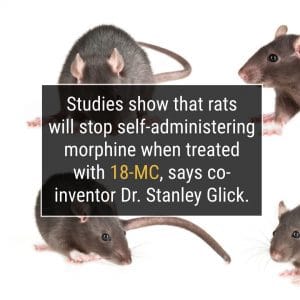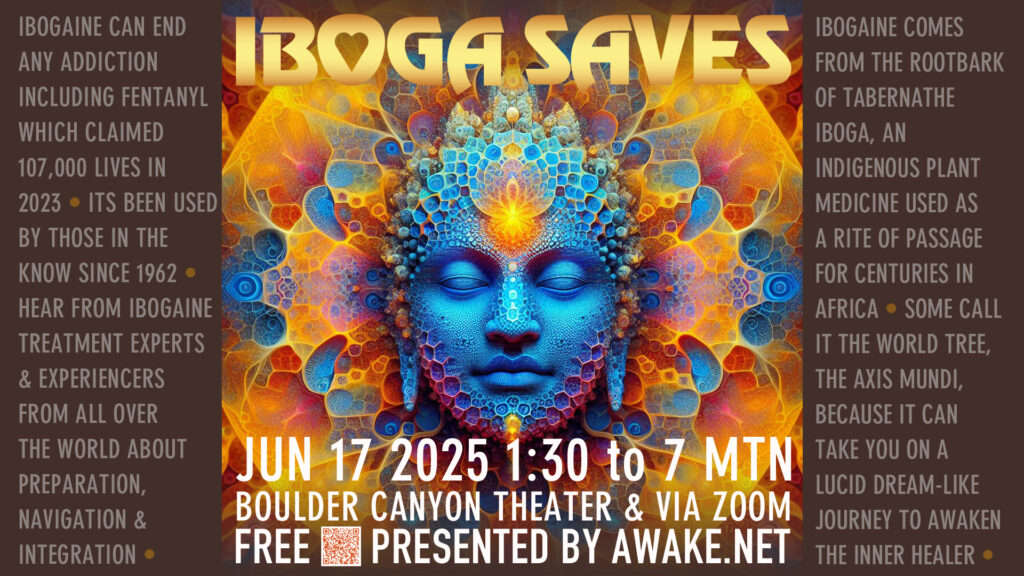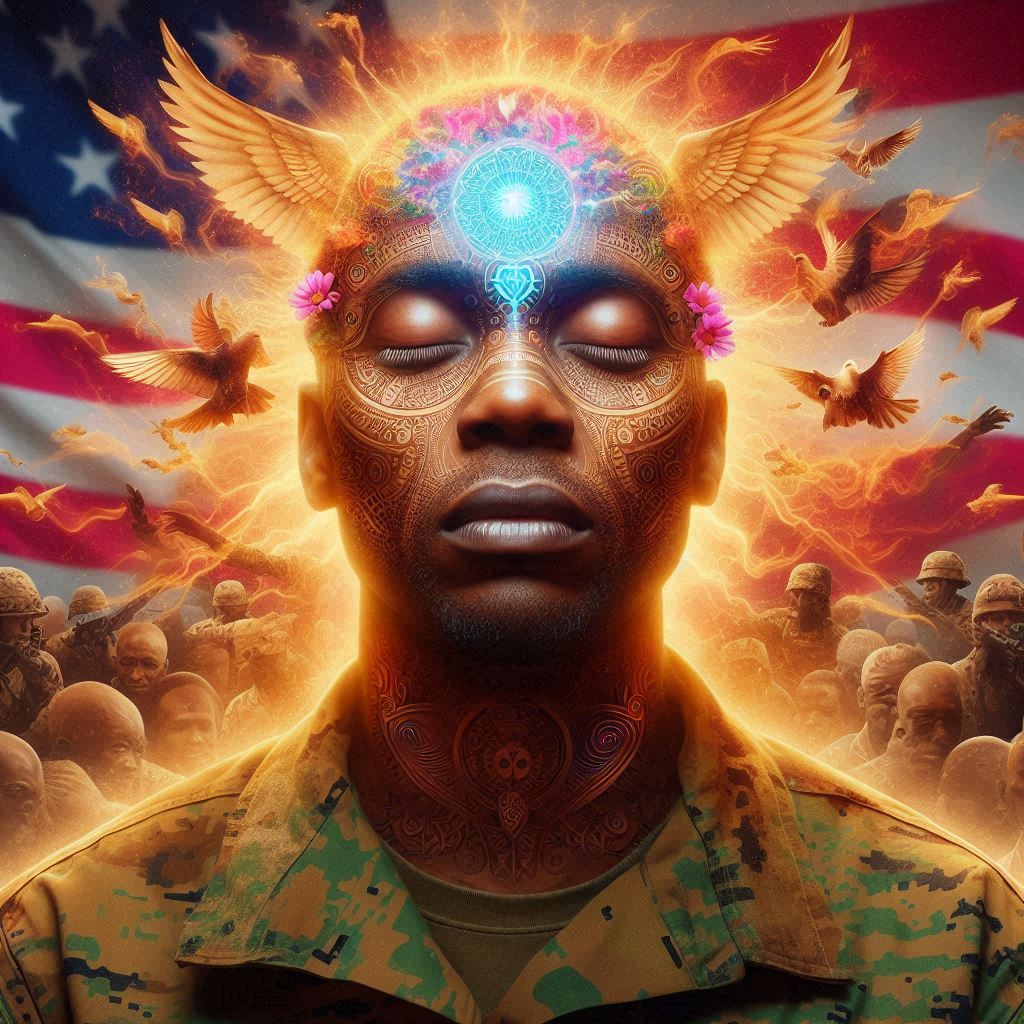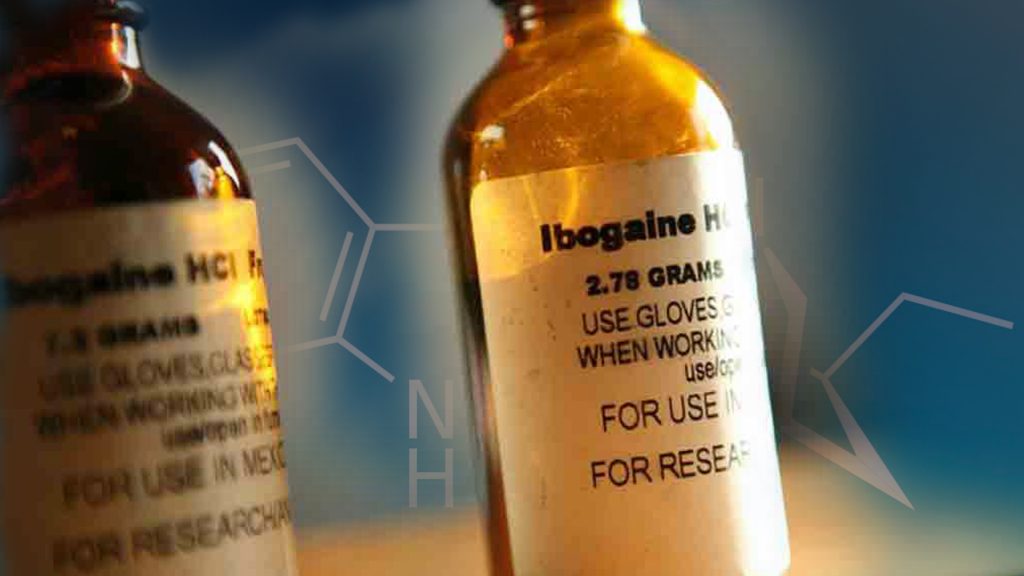18-MC: the Synthetic Derivative of Ibogaine


Stanley Glick, PhD, MD, shares his views on the past, present, and future of ibogaine and 18-MC and on the prejudice against addicts and psychedelic drugs that inhibits funding for medical research.
Would you please give us a synopsis of the history of your research, especially as it relates to ibogaine?
I was professor and chair of the Department of Pharmacology and Toxicology at Albany Medical College. My research was funded by NIDA grants for several years and focused on the neurochemical mechanisms of action of abused drugs. After 1989, when Howard Lotsof contacted me, I concentrated on ibogaine and its synthetic derivatives. The first paper on 18-MC appeared in 1996, and I worked on it pretty much steadily until about 2012.
Mr. Lotsof experienced ibogaine for the first time in the early 1960s. He had six buddies with him who all abused drugs, including heroin. And five of the seven supposedly lost their craving for it after they had taken ibogaine. Mr. Lotsof did a variety of things after that. He went back to college. Somewhere in the 70s, he decided to form a company based in Belgium to make ibogaine. He thought he would tell the world, and he would be embraced as the messiah who would cure mankind of this terrible scourge. Then he discovered there were such things as the FDA, laws, regulations, research, and he realized that he was going to have to get scientists to study it.
So he started calling every drug abuse scientist in the country. And for better or worse, I was the first one that was sort of intrigued by it, or at least my curiosity was piqued. I thought we would get some of it, I’d do some relatively short-term studies with it, it wouldn’t likely produce what it was claimed to do, and I would have satisfied my curiosity. So he sent me some ibogaine eventually, and we actually also entered into a small contract; I think the total was about $5,000. However, after less than a thousand dollars, he ran out of money and said he couldn’t raise any more. It turned out the ibogaine he sent me was terribly impure. We eventually got it from the Sigma Chemical Company, which was selling it at the time, and this material was 99% pure.
 I started doing some studies with it, and the first study we did was to test ibogaine in a model of drug self-administration; a rat is implanted with an intravenous catheter, and when the rat presses a lever it gets an infusion of drug from a pump that’s connected to the other end of the catheter. This model has really been well established and is probably the best animal model of virtually any human behavior. If a rat self-administers the drug, and it’s a new drug, and it finds its way to the street, you can bet that people are going to abuse it. And similarly, just about every drug that people will become addicted to an animal will self-administer. It’s not just rats but any species that you can get into the laboratory: mice, cats, dogs, baboons, monkeys, even pigeons. So we gave ibogaine to some rats that were self-administering morphine, and lo and behold, they decreased the self-administration the day we gave it. That was not a huge surprise because the rats looked positively bizarre. We can’t tell if a rat is hallucinating, but if one were to imagine what that might look like, that’s the way the rats looked. But what was surprising was a day later, when the rats appeared to look perfectly normal, 24 hours later (and now we know what ibogaine’s half-life is; there’s still some left 24 hours later, but very little), the rats’ intake of morphine was still depressed, not as much as was on the first day, but it was still markedly depressed. That intrigued me, and I started doing more studies with it, including other drugs like cocaine.
I started doing some studies with it, and the first study we did was to test ibogaine in a model of drug self-administration; a rat is implanted with an intravenous catheter, and when the rat presses a lever it gets an infusion of drug from a pump that’s connected to the other end of the catheter. This model has really been well established and is probably the best animal model of virtually any human behavior. If a rat self-administers the drug, and it’s a new drug, and it finds its way to the street, you can bet that people are going to abuse it. And similarly, just about every drug that people will become addicted to an animal will self-administer. It’s not just rats but any species that you can get into the laboratory: mice, cats, dogs, baboons, monkeys, even pigeons. So we gave ibogaine to some rats that were self-administering morphine, and lo and behold, they decreased the self-administration the day we gave it. That was not a huge surprise because the rats looked positively bizarre. We can’t tell if a rat is hallucinating, but if one were to imagine what that might look like, that’s the way the rats looked. But what was surprising was a day later, when the rats appeared to look perfectly normal, 24 hours later (and now we know what ibogaine’s half-life is; there’s still some left 24 hours later, but very little), the rats’ intake of morphine was still depressed, not as much as was on the first day, but it was still markedly depressed. That intrigued me, and I started doing more studies with it, including other drugs like cocaine.
What eventually emerged was a lot of publicity, and unfortunately not good publicity. A group at Johns Hopkins reported that ibogaine had some serious neurotoxicity (damage to the cerebellum). Others reported bradycardia (slower than normal heart rate), which can be serious. People can die from the bradycardia unless it’s recognized. It’s easy to treat, but it has to be recognized. It became clear to me fairly early on that there was no way that ibogaine was going to become an approved medication in this country. At the time I had a medicinal chemist colleague at a neighboring institution who didn’t work on this kind of structure but who had a colleague at the University of Vermont who did; his name is Martin Kuehne, and he did have expertise in developing chemicals with this general structure. So we got together and had a number of discussions and decided to collaborate on this. Learn more about risks.
Martin started sending me one derivative after another. Ultimately we tested approximately 60 derivatives. The first one that showed significant promise was what we now call 18-MC or 18- methoxycoronaridine. At that time we had documented some of the side effects of ibogaine, and 18-MC appeared to lack the side effects but retained the putative beneficial therapeutic effects. So at that point I pretty much stopped studying ibogaine and began to study 18-MC in earnest, which I did for many years thereafter. I believe we eventually figured out how it works. It blocks the alpha-3 beta-4 nicotinic receptor, which I believe is how ibogaine also works.
Ibogaine has a number of other actions that 18-MC does not have. It has NMDA (a type of glutamate receptor) antagonist properties, which is similar to what PCP (phencyclidine, angel dust) does. It also releases a large amount of serotonin, which may be analogous to what LSD does. And it has some sigma-2 activity, which also may figure into the psychedelic effects. I believe it is these other actions of ibogaine that produce hallucinogenic effects, and 18-MC appears to lack those actions. That is why I think 18-MC is going to become or could become a major advance in addiction interruption with at least the same efficacy as ibogaine, but without the psychedelic effects. A more detailed account of Dr. Glick’s research.
18-MC interrupts addiction, but you may need the psychospiritual journey for real change.
 Without studies on humans it’s hard to say for sure, but even if the non-psychedelic 18-MC can achieve the objective of interrupting the opioid addiction, in order for a person to transcend their addictive behavior patterns for good, they may need the psychedelic element which can provide psychospiritual healing, self-knowledge, and a direct experience of one’s wholeness.
Without studies on humans it’s hard to say for sure, but even if the non-psychedelic 18-MC can achieve the objective of interrupting the opioid addiction, in order for a person to transcend their addictive behavior patterns for good, they may need the psychedelic element which can provide psychospiritual healing, self-knowledge, and a direct experience of one’s wholeness.
Some say most important part of the process is the post-journey integration period. Integration is when the teachings of the inner journey are translated into lifestyle and behavior changes with planning and resolution. This can continue for months and years after the initial reset, with different degrees of success depending on the individual. Some never go back to using after just one treatment. Others may relapse a time or two after months, even years, of being clean. Relapse can be avoided by planning for integration and having a support system in place such as a recovery coach or in-residence program.
So your candid assessment is that ibogaine itself will never be approved by the FDA?
Yes, if for no other reason that to this day—and this might change—there’s never been an approved drug that as part of its normal pharmacology produces hallucinogenic effects. So that to me just meant that there’s no way the FDA was going to approve it. And that combined with the toxicity, which at least in terms of the cardiac effects that can be lethal, it might be extremely unlikely that it will ever get approved.
Never is a big word, and now there’s all this new research about the properties of hallucinatory drugs like psilocybin and LSD.
One of the crimes associated with this whole field is that ibogaine has never been involved in a double blind scientific trial. There was a proposal to do so in 1995, and NIDA convened a consensus conference of anyone and everyone who had ever done any kind of work with ibogaine. They hired 18 consultants—nine from academia and nine from industry—and all but two of the academic consultants voted against pursuing ibogaine as a medication. NIDA used this as their excuse for not bothering with it thereafter. So afterwards, it was virtually impossible for anyone to get funded to do this research.
So is there a conspiracy, a sort of stonewalling or something like that?
Well it depends on how you look at it. From NIDA’s point of view, this is a drug that has not been subject to standard scientific inquiry. It also has these side effects that can be lethal. And it also has the hallucinations, which is unusual. From their point of view, I can understand it, but on the other hand, addiction is an extremely serious and lethal disorder. And least in my view, anything that offers a glimmer of hope should be pursued. But that was not their view. Also, right from the beginning, I got a lot of grief from my colleagues because ibogaine was not discovered by a scientist. It wasn’t discovered in a pharmaceutical laboratory but was introduced by layman. Right from the start, this generated a lot of backlash and most of my colleagues really wanted nothing to do with it and often criticized it quite readily without really knowing very much about it.
Are you aware that even MAPS, the Multidisciplinary Association for Psychedelic Studies, says that ibogaine has a one in 300 mortality rate and that number appears to have kind come out of a study that included people who self administered, and It doesn’t square at all with what the ibogaine clinics are reporting.
It’s very difficult to believe any such statistics because there’s just never been serious record keeping and scientific studies done to verify or not verify this. So there’s a lot of folklore surrounding ibogaine, which is unfortunate. Even with that, just because of the hallucinogenic effects, there has always been a lot of backlash to it.
So the real issue is more the hallucinogenic effects? It’s really the block, the thing that keeps it out of the mainstream?
Yes, it probably is, because even if the bradycardia occurs where there’s adequate support staff and physicians, it’s easily treatable. So by itself, it really should not be something that would interfere with its approval.
So where is 18-MC right now, and where is it going? If it does work without hallucinations, you could interrupt addiction and help end the opioid epidemic.
It’s been extremely frustrating. I approached numerous companies. In fact, at one point I sent a letter to 33 companies and received negative answers from 13 of them and no response from the rest. I did have a few false starts where a group of investors decided to invest in this and started to try to do studies, but it turned out they had no clue what they were doing, and I gave up on them eventually. However, I hooked up with a company called Savant in the Bay Area about 10 years ago. And they have doggedly pursued this under Steve Hurst as the president and CEO. He has really tried everything under the sun to raise capital to get this into clinical trials. Along the way, it was discovered in Brazil that 18-MC also has efficacy in treating leishmaniasis, which is a parasitic disease that’s prevalent in the tropics, particularly in South America, especially Brazil. Eventually we started collaborating with a Brazilian pharmaceutical company. The two companies agreed to share costs, and a very limited phase one trial was conducted in Brazil. That was a couple of years ago and 18-MC looked quite safe. The trials are set to resume at the end of March. In this country, Savant actually did get FDA approval for a phase one trial. Unfortunately, they haven’t had the funds to pursue it, so they’ve been looking for somewhere in the vicinity of $10-15 million. There have been a number of leads that haven’t worked out. The latest is another company that has a pretty decent track record and is interested in pursuing this, and they’re in negotiations now about collaborating with Savant. Money has really been the major problem, and it’s been a mystery to me, in view of the opioid epidemic, why people aren’t knocking on our door.
You said it was extremely frustrating that there can’t be that small investment. I mean Savant needs $10-15 million, and they can’t raise it? That’s ridiculous.
One new source of hope is that NIDA has finally gotten money to allocate a significant amount for this purpose in particular. And Savant has developed a close relationship with investigators at NYU. They have a Center of Excellence on Addiction, which has been quite supportive, and the NYU investigators are going to apply for a NIDA grant for this. These people are very much on board, and they are really at the top of the field. So if they can’t get funded for this, then probably no one can. So we’re hopeful that that’s going to work out. Savant did actually have a $6.7 million NIDA grant to support the pre-clinical development of 18-MC and the toxicity studies, but then they couldn’t get it renewed, so they never got to the efficacy studies.
 It seems like there’s a half-hearted response. You would think that it would be full speed ahead to doing this. I’d like to ask you if you think an analogy we use is actually a good one. During World War II, when they discovered penicillin and its antibiotic properties, it was hard to grow mold. Then the British and American governments put pressure on the pharmaceutical companies to fast track it so that they could mass produce it for hundreds of thousands of people. And they did. That’s how a lot of lives were saved. And even though we’re not at war, the opioid epidemic numbers are severe and deserve a fast-track response.
It seems like there’s a half-hearted response. You would think that it would be full speed ahead to doing this. I’d like to ask you if you think an analogy we use is actually a good one. During World War II, when they discovered penicillin and its antibiotic properties, it was hard to grow mold. Then the British and American governments put pressure on the pharmaceutical companies to fast track it so that they could mass produce it for hundreds of thousands of people. And they did. That’s how a lot of lives were saved. And even though we’re not at war, the opioid epidemic numbers are severe and deserve a fast-track response.
Right, a lot of the response is due to prejudice. Everyone feels sorry for people who have infectious diseases, but if you have an addictive disease, people criticize you.
So it’s a stigmatized population. That’s the problem.
Yes. It’s the fact that even though people now recognize addiction as a disease, there are many, many people who just think this is a matter of will and moral failure. And all you have to do is say no, and the disease will go away. There are still a lot of mountains to climb.
Another analogy that we’ve been thinking of developing is comparing the addicted population to early prejudice against AIDS victims. It wasn’t until Ryan White and Magic Johnson and others came forward and put a different face on the AIDS problem than homosexuals gathering in bathhouses to have sex that spread AIDS. I wonder whether the fact that 50-year-old housewives now find themselves opioid addicts might not help turn the tide against this prejudice against addicts.
It probably would help a bit, but there’s such a long way to go. Attitudes now toward being addicted are similar to the long time it took for mental illness to begin to get treated as a disease. There was this attitude that these people were just crazy, and all they had to do is start acting normal. Addiction is where mental illness was 30 years ago, and unfortunately it’s going to take a lot of time and a lot of effort, and hopefully we’ll prevail, but I really think that’s the crux of the problem.
 After teaching writing for several years at colleges and universities in Washington and Oregon, Eric Swenson became a writer himself. He has (co)authored six books and written more than 200 articles on subjects as diverse as commercial fishing, forensic DNA, child development, legal education, and baseball. He also served as an editor at Microsoft and Ernst & Young and as the communications director for an environmental organization promoting ocean health and for a genetics-testing lab. Eric now focuses exclusively on psychedelic-assisted healing. He edits an ayahuasca website, http://kahpi.net, and an iboga public information campaign, https://awake.net. His other major interest is children, and he volunteers at Head Start and at a center for traumatized youth.
After teaching writing for several years at colleges and universities in Washington and Oregon, Eric Swenson became a writer himself. He has (co)authored six books and written more than 200 articles on subjects as diverse as commercial fishing, forensic DNA, child development, legal education, and baseball. He also served as an editor at Microsoft and Ernst & Young and as the communications director for an environmental organization promoting ocean health and for a genetics-testing lab. Eric now focuses exclusively on psychedelic-assisted healing. He edits an ayahuasca website, http://kahpi.net, and an iboga public information campaign, https://awake.net. His other major interest is children, and he volunteers at Head Start and at a center for traumatized youth.
Subscribe to Awake Events & Posts




